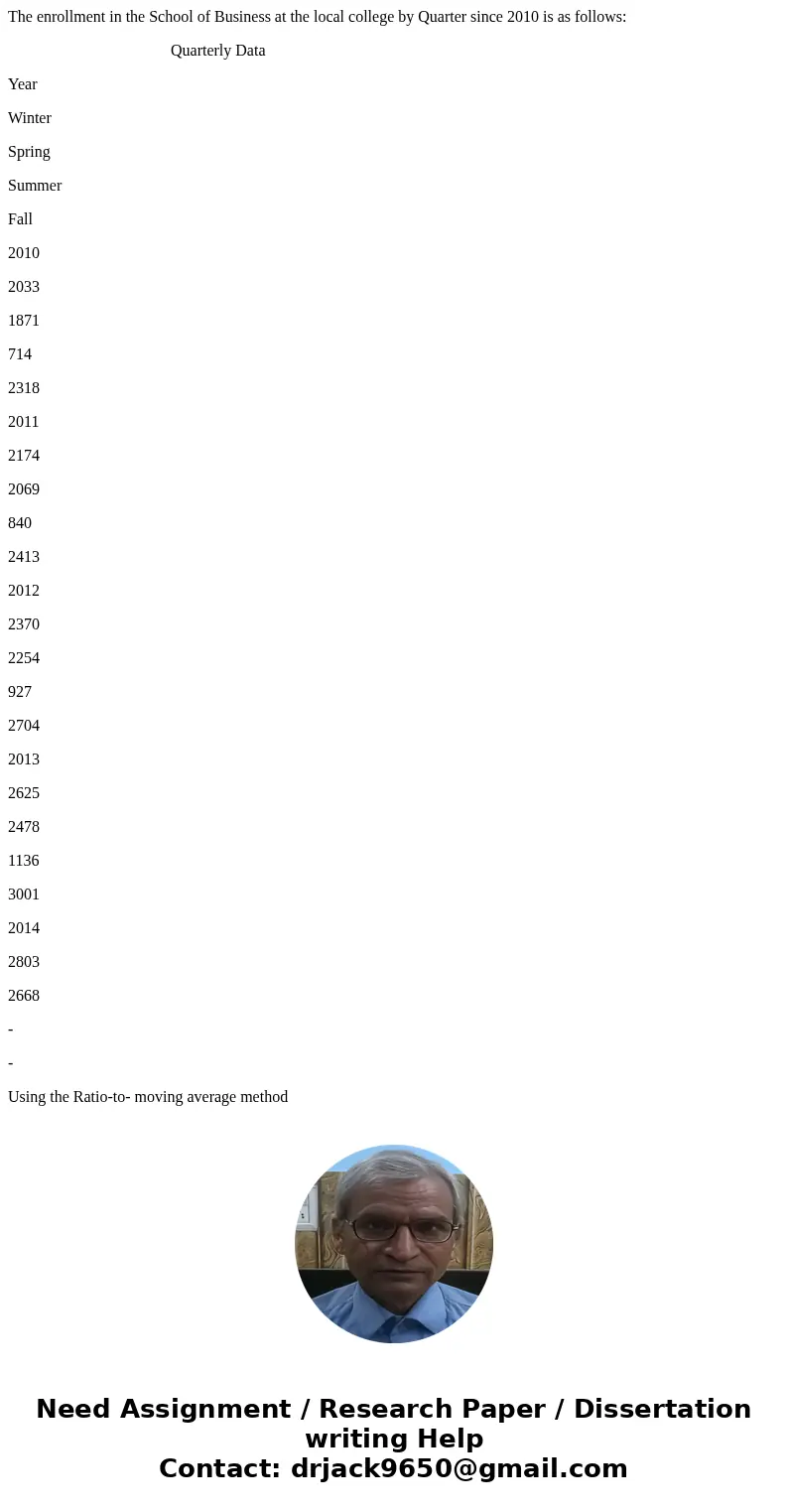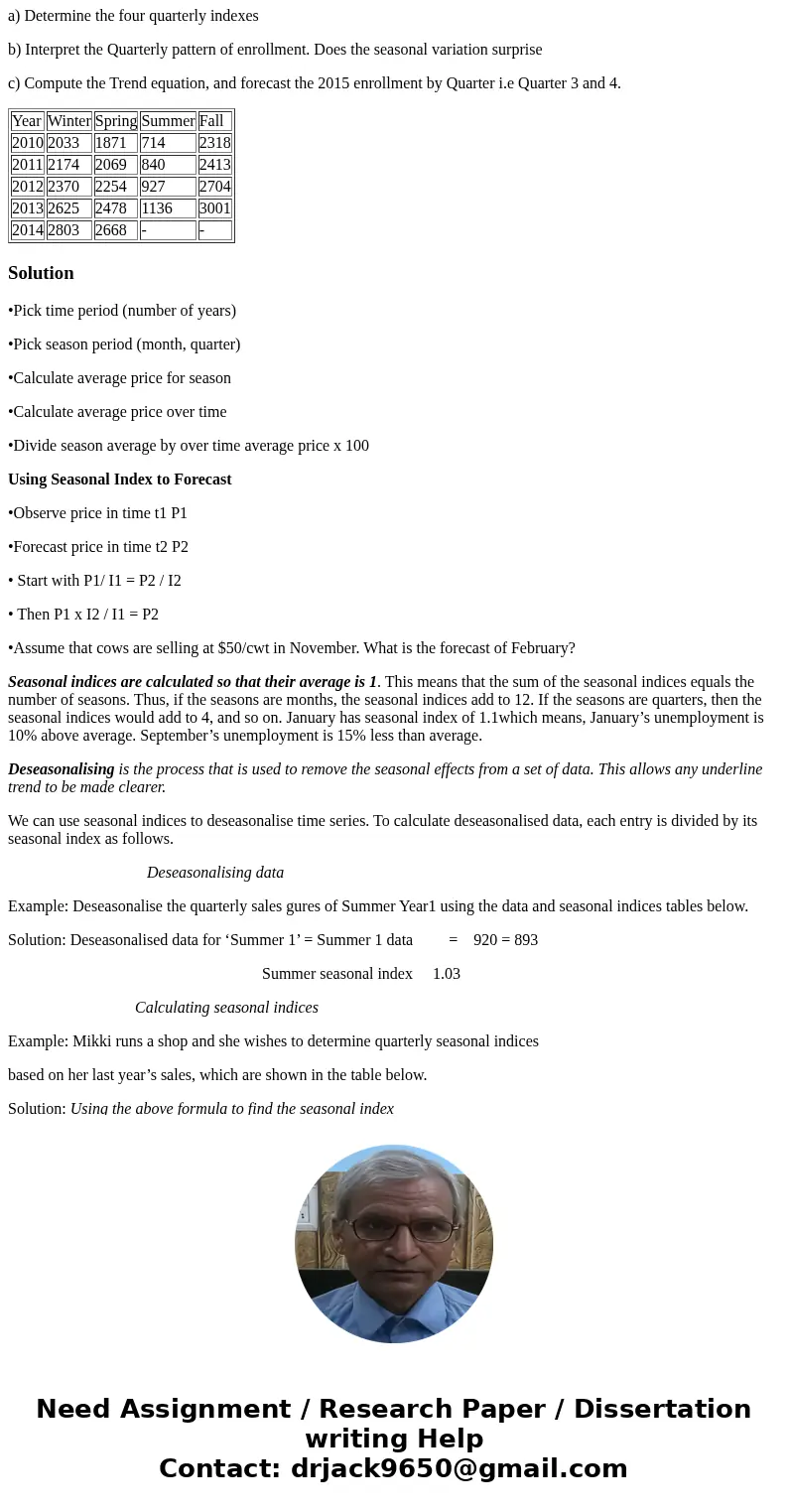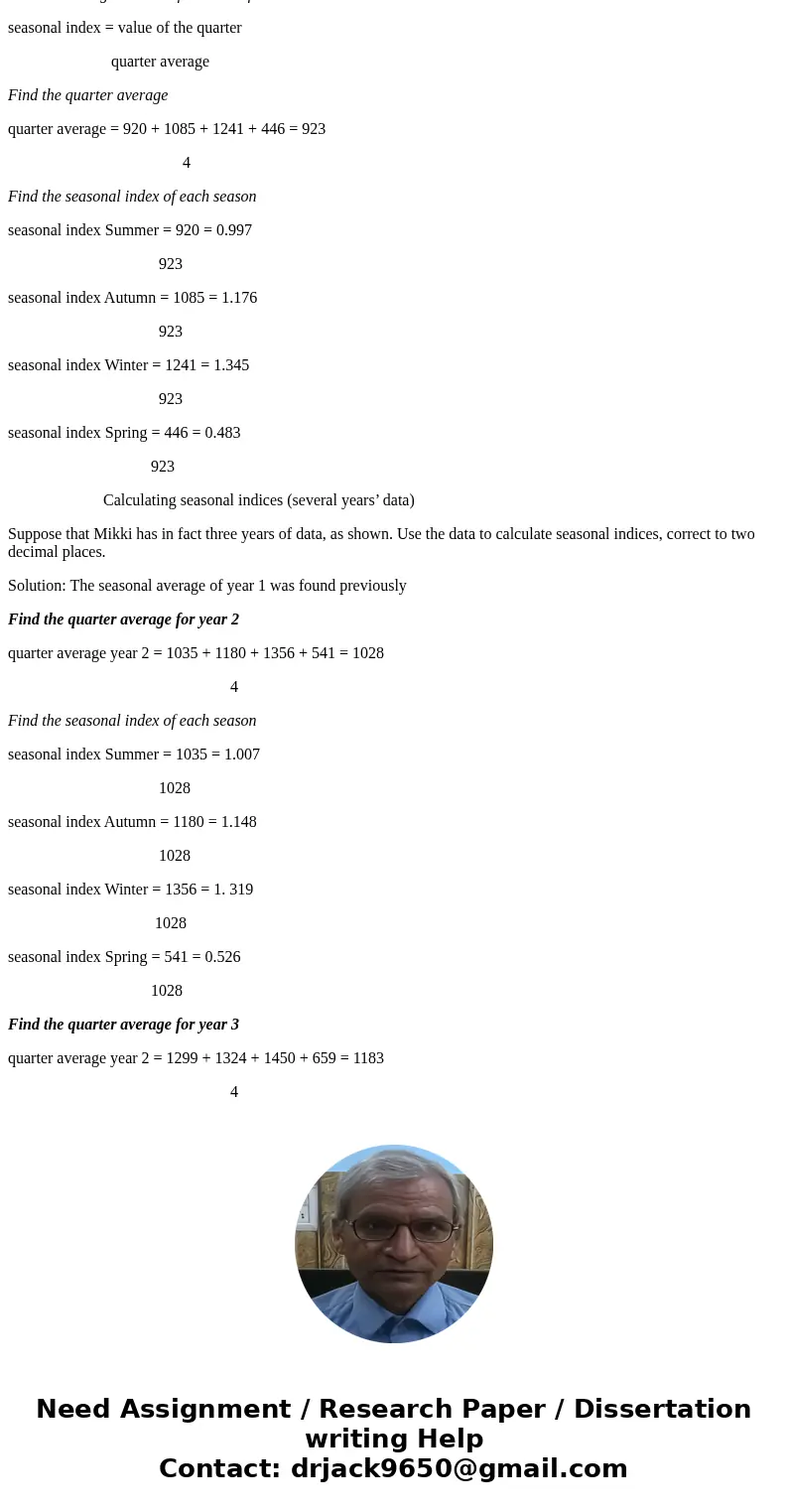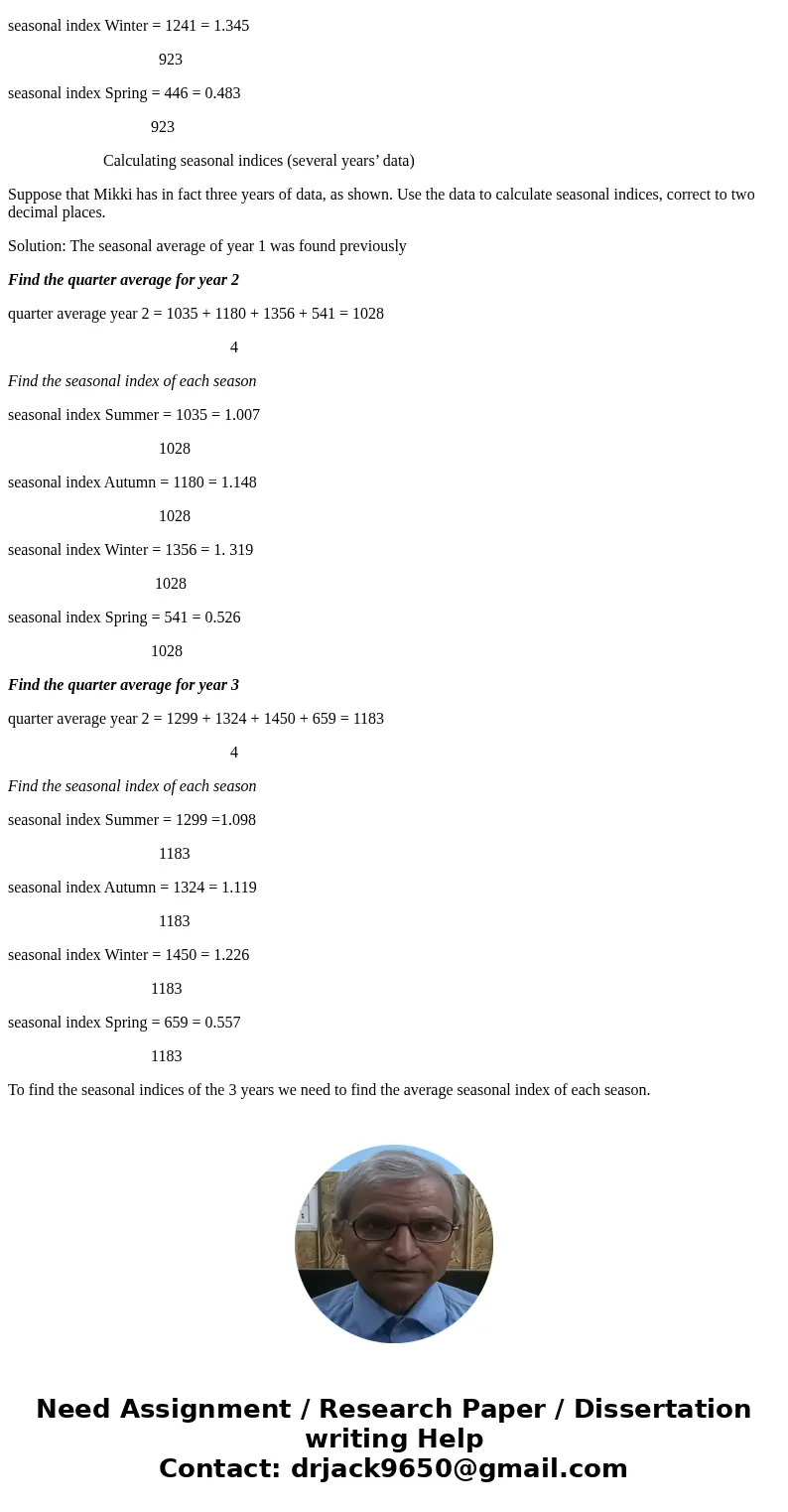The enrollment in the School of Business at the local colleg
The enrollment in the School of Business at the local college by Quarter since 2010 is as follows:
Quarterly Data
Year
Winter
Spring
Summer
Fall
2010
2033
1871
714
2318
2011
2174
2069
840
2413
2012
2370
2254
927
2704
2013
2625
2478
1136
3001
2014
2803
2668
-
-
Using the Ratio-to- moving average method
a) Determine the four quarterly indexes
b) Interpret the Quarterly pattern of enrollment. Does the seasonal variation surprise
c) Compute the Trend equation, and forecast the 2015 enrollment by Quarter i.e Quarter 3 and 4.
| Year | Winter | Spring | Summer | Fall |
| 2010 | 2033 | 1871 | 714 | 2318 |
| 2011 | 2174 | 2069 | 840 | 2413 |
| 2012 | 2370 | 2254 | 927 | 2704 |
| 2013 | 2625 | 2478 | 1136 | 3001 |
| 2014 | 2803 | 2668 | - | - |
Solution
•Pick time period (number of years)
•Pick season period (month, quarter)
•Calculate average price for season
•Calculate average price over time
•Divide season average by over time average price x 100
Using Seasonal Index to Forecast
•Observe price in time t1 P1
•Forecast price in time t2 P2
• Start with P1/ I1 = P2 / I2
• Then P1 x I2 / I1 = P2
•Assume that cows are selling at $50/cwt in November. What is the forecast of February?
Seasonal indices are calculated so that their average is 1. This means that the sum of the seasonal indices equals the number of seasons. Thus, if the seasons are months, the seasonal indices add to 12. If the seasons are quarters, then the seasonal indices would add to 4, and so on. January has seasonal index of 1.1which means, January’s unemployment is 10% above average. September’s unemployment is 15% less than average.
Deseasonalising is the process that is used to remove the seasonal effects from a set of data. This allows any underline trend to be made clearer.
We can use seasonal indices to deseasonalise time series. To calculate deseasonalised data, each entry is divided by its seasonal index as follows.
Deseasonalising data
Example: Deseasonalise the quarterly sales gures of Summer Year1 using the data and seasonal indices tables below.
Solution: Deseasonalised data for ‘Summer 1’ = Summer 1 data = 920 = 893
Summer seasonal index 1.03
Calculating seasonal indices
Example: Mikki runs a shop and she wishes to determine quarterly seasonal indices
based on her last year’s sales, which are shown in the table below.
Solution: Using the above formula to find the seasonal index
seasonal index = value of the quarter
quarter average
Find the quarter average
quarter average = 920 + 1085 + 1241 + 446 = 923
4
Find the seasonal index of each season
seasonal index Summer = 920 = 0.997
923
seasonal index Autumn = 1085 = 1.176
923
seasonal index Winter = 1241 = 1.345
923
seasonal index Spring = 446 = 0.483
923
Calculating seasonal indices (several years’ data)
Suppose that Mikki has in fact three years of data, as shown. Use the data to calculate seasonal indices, correct to two decimal places.
Solution: The seasonal average of year 1 was found previously
Find the quarter average for year 2
quarter average year 2 = 1035 + 1180 + 1356 + 541 = 1028
4
Find the seasonal index of each season
seasonal index Summer = 1035 = 1.007
1028
seasonal index Autumn = 1180 = 1.148
1028
seasonal index Winter = 1356 = 1. 319
1028
seasonal index Spring = 541 = 0.526
1028
Find the quarter average for year 3
quarter average year 2 = 1299 + 1324 + 1450 + 659 = 1183
4
Find the seasonal index of each season
seasonal index Summer = 1299 =1.098
1183
seasonal index Autumn = 1324 = 1.119
1183
seasonal index Winter = 1450 = 1.226
1183
seasonal index Spring = 659 = 0.557
1183
To find the seasonal indices of the 3 years we need to find the average seasonal index of each season.




 Homework Sourse
Homework Sourse